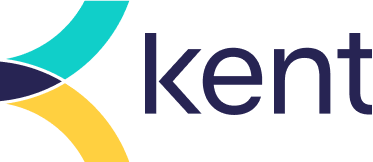A Machine Learning-Driven Tool for Smarter Floating Offshore Wind Turbine Design

The future of offshore wind relies on smarter, more efficient design solutions. As the industry pushes towards larger, more powerful floating offshore wind turbines (FOWTs), engineers face a web of complex challenges. Designing these massive structures requires balancing aerodynamics, hydrodynamics, and structural forces—all while keeping costs and material use in check.
Traditional design methods often rely on time-consuming simulations that make early-stage innovation difficult. But what if we could streamline this process, achieving faster insights without compromising accuracy? This is where machine learning steps in.
At Kent, we’ve developed a machine learning-driven tool that transforms FOWT design optimisation. By integrating ML-driven optimisation with established numerical methods, this tool enables engineers to run high-volume sensitivity analyses at a fraction of the usual computational cost. The result? Faster, smarter decision-making in the critical early phases of design.
Why Design Optimisation Matters in Offshore Wind
Floating wind turbines operate in some of the most extreme conditions on Earth—high winds, deep waters, and relentless waves. Every design decision, from the turbine’s tower height to the floater’s stability, impacts performance, cost, and longevity. Engineers must balance multiple constraints, including:
- Structural integrity – ensuring the tower and floater withstand environmental forces.
- Mass optimisation – reducing steel use without compromising safety.
- Turbine efficiency – fine-tuning design elements for maximum energy output.
- Hydrodynamic stability – maintaining platform balance in rough seas.
Without an efficient way to analyse these variables, innovation is slow and costly.
How Machine Learning (ML)-Powered Design Optimisation Works
Our toolchain combines machine learning with physics-based models to conduct rapid assessments of FOWT designs. Here’s how it works:
- Defining Key Variables – The tool considers factors like turbine power output, tower height, and platform stability.
- Running ML-Driven Simulations – Instead of relying solely on traditional methods, the system uses machine learning to predict optimal configurations.
- Analysing Trade-Offs – The tool identifies the best balance between mass reduction, stability, and efficiency.
- Providing Actionable Insights – Engineers receive data-driven recommendations for improving FOWT designs.
Key Findings: Smarter Design, Less Material, More Efficiency
Preliminary tests using this tool have revealed valuable insights:
- Optimised Tower Design – Soft-stiff tower configurations can reduce steel mass by up to 25% compared to stiff-stiff designs.
- Fine-Tuned Eigenfrequencies – Adjusting tower height can enhance natural frequency without adding extra mass.
- Stability Without Overbuilding – A small relaxation in platform angle constraints can lead to tower mass reductions of up to 50%.
These findings are a game-changer for FOWT development. By allowing for real-time exploration of multiple design pathways, the tool enables better engineering decisions while reducing material waste and cost.
What This Means for the Future of Offshore Wind
The energy transition depends on innovation. As floating wind scales up, tools like this will help the industry move faster and design smarter. By leveraging machine learning, we can unlock new efficiencies, improve structural integrity, and reduce the cost of offshore wind energy.
At Kent, we’re committed to pioneering digital solutions that push the boundaries of offshore engineering. If you're working in offshore wind and looking for smarter ways to optimise your designs, visit: https://bit.ly/3JTYahF
By using our website you consent to all cookies in accordance with our Privacy Policy.










